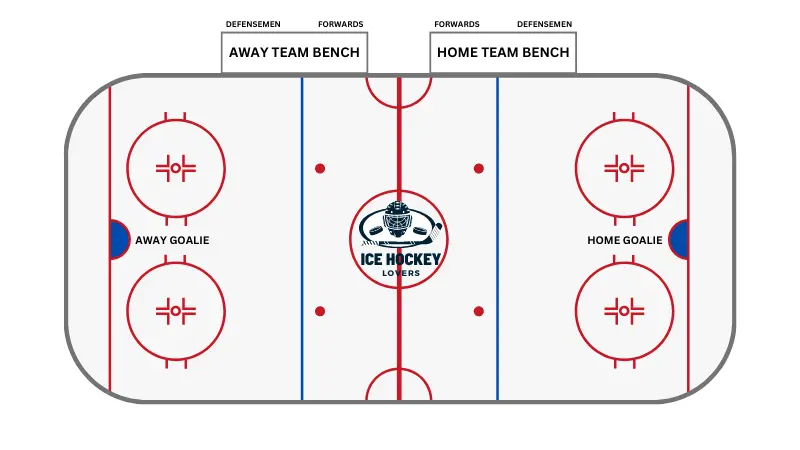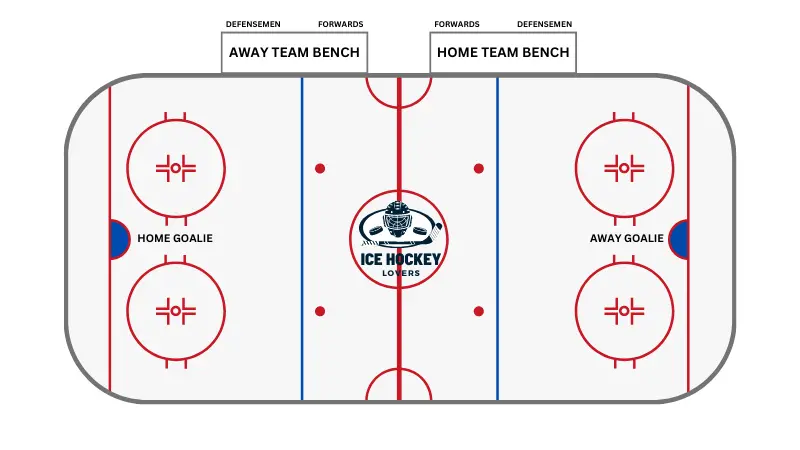What is the Long Change in Hockey? Long Change Explained!

Ice hockey sports have many terms, just like all other sports. Usually, die-heart fans know about every rule and its details, but not many people know about even some standard terms. Sometimes, a term’s name explains what it means, but sometimes, we do not know about some terms. What are these rules? What is their purpose? Or what do they indicate? What effects do they have on the game?
The Long change term refers to the second period when the home and away goalies switch sides, and the players sitting on the bench are farther away from their goal. It implies that each team is playing on the opposite side of the net than where they were playing before.
That’s the most challenging time for each team, making them vulnerable to giving up easy goals. Regarding the defensive side, it is the longest time in the game for a player in the defensive zone to switch quickly. This happens in the second period of regulation and during overtime.
Table of Contents
Long Change – Leading Factors
Two factors cause a long change in hockey.
- Three periods
- Teams do not exchange benches.
Every match arena has a visitor’s bench and a home team bench. During the game, both teams are assigned to their respective bench, and bench players do not exchange throughout the game.
But the hockey game has three periods, and it is the game rule requirement for players to switch ends at the start time of the second period. Heading on this rule, team exchanges end but stay on the same bench. This creates a problematic situation for the bench players as they end up far away from their goalie.
The first and third period is comparatively easy for players as they can easily extend into their defensive zone, making it easier for a player, especially for defensemen, to switch back and forth with their teammates without any hardship during the time of sustained pressure from the opposing team in the offensive zone.
Period – 1 + 3
At the time of the second period, the nearest bench player to their goalkeeper is past the red line and, so far, not even half of the rink as their goalie. When there is an attack on a team which, as a result, puts pressure on the team, they cannot release it. This creates difficulty for the players to switch and gain reinforcement.

So basically, the overall theory is that it will lead to the player’s tiredness, and the game will be like at its climax point, as losing easy goals and more scoring chances against your team.
Period – 2 (The Long Change)

The most pressure and difficulty comes on the defenseman, as being far away from his bench makes it quite difficult for him at specific shift points. This is a ‘Long Change’ for them as making it rapidly without facing any problems is challenging.
How do the players adjust to the long change?
Usually, the defenseman and the forwards on the bench switch sides where they sit on the bench every period. The defensemen always sit on the bench closest to their goalie, and the forward sits on the side closest to the opposite-site team goalie.
Hence, the defensemen sit on the blue stripe in 1st and 3rd period. While during the 2nd period, they sit on the red line as of long change.
Players switch with each other while on ‘the Fly’ means during play, not at the stoppage of play. When players switch, they make sure that they are changing on the correct line, allowing them to get off the ice before energy gets drained off of them and put extra attention to not doing mismatches for the rest of their teammates in the play. Still, it is common in times of long change when under pressure, a player gets on a foul line and makes an odd-man rush for the rest of his team’s players.
But when the team has a long change, it is most challenging for the defensemen to change on the Fly, being on the right side and far away from the goaltender. So, to make it feasible for defensemen, the other teammates apply the tactic of holding the puck behind the net longer, allowing their teammates to change without making the game risky. In the case of forwards, they hold the puck far in the offensive zone so that the defense can change quickly.
The players switch one-on-one, not as a complete line, yet they ensure that the lines they are playing with stay organized.
Does a long change have an impact on goal scoring?
The stats above clearly shows that in the 2nd period, the Long Change had a great effect on goal scoring.
Two situations affect goal scoring:
- In the second period – goals are increased, given the effect of the long period.
- In the third period – goals are increasing, given an increase in empty-net goals and more risks taken by the team who is behind, doing their best to score double the number of goals to get equal or to overcome the goals they let in by taking more risky attempts.
If you have been watching the previous seasons of the NHL, you can see that more goals are scored in the second period due to the long change. The long change creates a situation where tired players have to stay longer in the game and get scored against; side by side, bad line changes are also executed, causing a mismatch for players, which leads to more scoring chances against them.
You can see this in the 2014-15 NHL season when this rule significantly affected over time. The primary purpose behind establishing this rule was to make teams have to go through a long change in overtime (and regulation) and cause an increase in goal scoring at that time and a decline in the amount of game that generally ends up with shootout. This rule brought the desired effect, and genuinely long change brings more goals in overtime, thus preventing as many games from ending in a shootout.
Frequently Asked Questions
What is the time duration of the long change in ice hockey?
After a stoppage, the visiting team has 5 seconds for a line change, and the home team has eight seconds for a line change. Then the linesman will blow the whistle and drop the puck within 5 seconds.
Is there a long change in overtime?
The NHL added the long change rule in overtime in the 2014 season, which increased goal scoring and sometimes brought a game to shoutouts.
Why are there a lot of line changes in hockey?
The change on Fly is a requisite part for the players in the game for two reasons.
1. To maintain the game flow
2. For the player’s stamina
Other sports need a game stoppage for a player substitute, but this is not the case with ice hockey.
Conclusion
During the second period, when a long change happens, the team’s bench players are farther away from their goaltenders, causing an increase in distance and resulting in changing difficulty on the Fly.
However, you can see the game outcome does affect the long change as it becomes difficult for the players to switch on and off ice quickly and accurately. Therefore, allowing more scoring chances results in more goals.
Related Posts:

Who is Austin Taylor?
Meet Austin Taylor, your go-to source for everything ice hockey! With a passion for the sport that’s as deep as the ice itself, Austin Taylor brings you concise, expert insights and nitty-gritty details on all things hockey. From gear reviews to strategy breakdowns, Austin Taylor is your trusted guide to navigating the exhilarating world of ice hockey. Get ready to lace up your skates and dive into the game with Austin Taylor as your ultimate companion.





